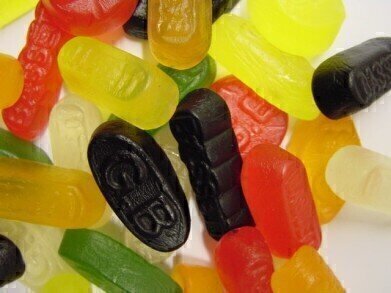GC, MDGC
Food Flavourings — Chromatography Tests the Strength
Jul 29 2015
There are strict regulations in Europe specifying what manufacturers are allowed to add to our food and drink. All additives, including things like colourings, emulsifiers and flavourings have to be on the European Union (EU) approved list for the food to be sold in an EU country.
Flavourings are added to foodstuffs to contribute taste and odour — helping the food to appear more appetising on the plate and on our palate. Flavourings can be simple ingredients or a complex mix depending on the effect the manufacturer is after. Both natural and manufactured flavourings are used — with the ability to list natural ingredients and flavourings a bonus for many manufacturers as natural is inherently safer right.
BAPs and flavourings
Not necessarily.
Some natural flavourings contain biologically active principles (BAPs) — components that could pose a health risk to humans — that are an inherent part of flavouring. Even though they are naturally occurring they have to be monitored, to make sure that they only appear in foodstuffs below permitted levels. BAPs cannot be added directly to food.
EU regulation 1334/2008 governs the use of flavourings and flavour properties in food in Europe. The regulation includes the flavourings that can be added to food and also the maximum levels for these substances in the final food product — based on assessment by the European Food Safety Authority.
Because the regulations apply to final food products, it is in this area that analytical methods to measure BAPs have been developed. Chromatography is one of the key methods used to measure BAPs in food, as scientists develop new methods using GC-MS and HPLC. In the UK, the Food Standards Agency plays a lead role in keeping our foods safe, and this includes developing new methods for measuring BAPs in food.
Volatiles in flavourings
But what about measuring BAPs in flavourings themselves? There are not many reported methods, but researchers at the International Organization of the Flavor Industry has set out to put this right. A team from the Working Group of Methods Analysis have reported a new method for analysing BAPs in flavourings using GC-MS.
The work Determination of volatile ‘restricted substances’ in flavourings and their volatile raw materials by GC-MS was reported in the Flavour and Fragrance Journal and will let flavour suppliers give more accurate information on their products to food manufacturers. The method was tested by nine different laboratories using different instruments and columns — with the results showing that the method is suitable for rapid routine checks on flavour products. The team state that the method has not been designed to measure BAPs in food.
Chromatography is a key technique in the analysis of food and its various additives — read about the analysis of colorants in the article, Analysis of Artificial Colorants in Various Food Samples using Monolithic Silica Columns and LC-MS in Chromatography Today. Wine gum anyone?
Image via By User Woseph on en.wikipedia (Own work).
Digital Edition
Chromatography Today - Buyers' Guide 2022
October 2023
In This Edition Modern & Practical Applications - Accelerating ADC Development with Mass Spectrometry - Implementing High-Resolution Ion Mobility into Peptide Mapping Workflows Chromatogr...
View all digital editions
Events
Jan 20 2025 Amsterdam, Netherlands
Feb 03 2025 Dubai, UAE
Feb 05 2025 Guangzhou, China
Mar 01 2025 Boston, MA, USA
Mar 04 2025 Berlin, Germany












